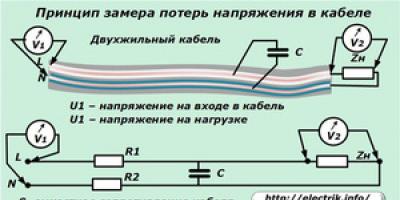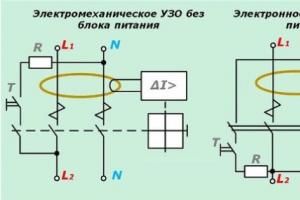Semolina– What grain is it made from? Composition of semolina, benefits for the body, review of the best brands on the market
What grain is semolina made from?
The main properties make semolina nutritious and healthy. This is due to the origin of the product. For production, certain varieties of wheat are required. Semolina is obtained after cutting the grains, the particles are obtained with a diameter of at least 0.5 mm.The type of cereal affects the finished cereal, which has a different category. When receiving raw materials with category “M”, it means that soft wheat was used.
The category designation “T” indicates that durum varieties were used. Sometimes a mixture of two cereals is found, in which case the brand “MT” is designated.
Composition of semolina, characteristics and calorie content

Semolina is rich in useful and nutritional elements:
- vitamins E, B1, B2, as well as B9 and PP
- in addition, mineral salts, among them there is sodium and phosphorus, magnesium and potassium, there is iron and zinc, cobalt along with fluorine and amino acids
- one of the main antioxidants in the product is vitamin E. Thanks to its effectiveness, it works correctly nervous system and the human brain. Semolina porridge calms a person during breakdowns or nervous disorders
100 grams of semolina contain 328 kcal. In addition, it contains 10.3 g of protein, 1 g of fat, and 70.6 g of carbohydrates.
Advice! Cereals in finished form prevents the formation of cancerous tumors. At correct use semolina can avoid increasing cholesterol, it is great for people with diabetes.
Beneficial properties of semolina, is there any harm to the body?

Semolina contains minerals, vitamins, and contains 70% starch. Beneficial features are preserved thanks to quick cooking. Semolina is considered to be a protein-free cereal, and doctors recommend eating it during chronic kidney failure.
Presence of harm to the body
Semolina consists of fast carbohydrates and sugar, the products instantly appear in the blood and the person receives a powerful boost of energy. But it does not last long and is not suitable for normal life. Due to the presence of these properties, the product should not be consumed by diabetics, as well as people who want to lose weight.Semolina is rich in gluten, it is found in large quantities, so people suffering from this substance should give up semolina. The product contains high calorie content, so you should not feed your child only this dish.

Semolina porridge with cranberry mousse
Mash the cranberries and pour boiling water over them, then cook for 7 minutes. Add 3 tablespoons of semolina to the mixture, sprinkle 0.5 cups of sugar on top. Cook the ingredients for 15 minutes, stirring. The finished mousse is a dish doubled in size.Semolina porridge with walnuts
Ingredients:- semolina – 0.5 cups
- milk – 800 ml
- sugar – 60 g
- jam – 100 g
- walnuts – 30 g
- salt as desired
- egg – 1 pc.
- a little vanillin
Important. Thanks to the porridge, fats are broken down and mucus is removed. The product does not have the properties to cause allergies, but individual intolerance may occur. If you regularly eat dishes made from semolina, you will not develop heart disease, as well as the vascular system.
Semolina and pumpkin donut
Grate the pumpkin using a coarse grater, mix with 4 tablespoons of semolina, add salt and beat in the egg. Mix the ingredients until a homogeneous mass is formed. Fry the resulting mixture in a hot frying pan on both sides. After the dish is browned on one side, turn it over with a spatula and fry the other side until golden brown. Before removing the product from the heat, spread sour cream on top. The sweet donut is ready.Review of the best semolina brands
The best semolina is produced at Aleyskzernoprodukt OJSC (Altai Territory).In addition, there are well-known manufacturers:
- OJSC "Saratov Bakery Plant"
- OJSC "Rostov Bakery Plant"
- OJSC "Mill Plant in Sokolniki" (Moscow)
Pros and cons of semolina for children
Semolina contains large amounts of gluten, which is why children experience severe allergic reactions. IN early age The child has a weak body, so you should not load him with this dish until the body gets used to gluten.Semolina consists of a huge amount of carbohydrates; a child’s fragile body is unable to cope with the substance. If you feed your child semolina often, he will begin to gain excess weight, the result will be an excessive number of indicators of age norms.
Dietary recipes with semolina: video
There are many different dietary recipes with semolina. One of them can be found by following the link:
Semolina boils quickly and contains very little fiber. Semolina is digested in the lower intestine and then absorbed into the blood. That is why liquid semolina porridges are included in diets for diseases of the gastrointestinal tract. Semolina cleanses the body and removes fat.
Semolina contains a lot of gluten, a protein also called gluten. There are people who are intolerant to gluten, which causes allergies.
There are three types of semolina on sale: the letter “M” on the packaging indicates semolina made from soft varieties of wheat, the letter “T” indicates semolina made from hard varieties, and the letters “MT” indicate semolina containing at least 20% of grains from durum varieties. wheat. Very often this information is not indicated on the packaging.
Taste of semolina
Semolina is coarsely ground wheat, which is why it has the appropriate taste. The taste of semolina porridge depends on what additional products were used in preparing the porridge.
Combination of semolina with other products
Semolina goes well with fruits, jams, and cottage cheese (in casseroles).
Using semolina in cooking
Semolina is used to prepare semolina porridge, Guryev porridge, dumplings, casseroles, and manna. Semolina is also used as a binding ingredient in the preparation of meat and fish cutlets, especially in baby food.
Features of preparing semolina
When cooking semolina porridge, you should follow the following rules:
- For 0.5 liters of liquid you need to take ¾ cup of semolina.
- The cereal is poured in a thin stream, stirring continuously, into a hot but not boiling (90-95 C) liquid, adding salt and sugar. You can pour the cereal through a sieve. Fall asleep quickly and evenly.
- Smaller grains cook faster.
- After the porridge is cooked, you need to close the pan with a lid and leave for a while so that the cereal swells.
Storing semolina
Semolina should be stored in a closed jar in a cool, dry place. You can throw a clove of garlic into the jar.
Traditional role in dishes
Semolina porridge is made from semolina, it is added to casseroles, pancakes are baked on its basis and pies are made - mannikas.
Acceptable Substitutions
In casseroles and cutlets, semolina can be replaced with coarse wheat flour or starch.
The history of the origin of semolina
Although people grew wheat before our era, semolina appeared much later.
In Rus', semolina was produced in small quantities and ended up on the tables of only aristocrats; the common people did not know semolina. IN THE USSR semolina has become a common everyday product.
Effect on the human body, beneficial substances
Semolina porridge is very often prepared for children, which is not entirely correct, since the child’s stomach cannot yet digest the starch contained in semolina in large quantities. Phytin, contained in semolina, is able to bind calcium, which comes with other foods, thus depriving the child’s body building material for bones. Often children who constantly eat semolina porridge develop rickets or seizures.
For adults and older people, the disadvantages of semolina devoid of fiber turn into its advantages: semolina porridge does not irritate the stomach and prevents colon cancer. Semolina is the only grain that is digested in the lower intestine and only there is it absorbed into its walls. Semolina is good remedy treatment and prevention of intestinal diseases, it cleanses the body of mucus and removes fat.
Semolina contains everything that wheat flour contains: starch, vitamins E and B1, B2, B6, PP, iron. Semolina is recommended for seriously ill patients postoperative period when increased nutrition is needed.
Interesting facts about semolina
Who invented Guryev porridge
The famous Guryev porridge was invented at the beginning of the 19th century. The name of this porridge comes from Count Dmitry Guryev, a member of the State Council and Minister of Finance, and it was invented by Zakhar Kuzmin, a serf cook. Guryev bought out Kuzmin and his family and made him his cook. There is another version, according to which Guryev himself invented the porridge recipe.
Article navigation:
About semolina, which one to choose and how to store
Semolina, compared to other cereals, does not have a high content of valuable microelements and fiber useful for digestion. Distinctive feature decoy is high content carbohydrates, making it an excellent source of energy.
It is mainly used for making porridges, great for breakfasts due to its high carbohydrate content. Semolina is added to the dough when preparing baked goods, which helps the baked goods retain their shape after baking.
The undeniable advantages of semolina include the speed of its preparation. From the start of cooking until it's ready, it only takes a few minutes and the dish is ready!
Semolina is coarse wheat flour with a particle size of 0.2 mm to 0.7 mm.
Semolina is made from wheat different varieties. Semolina variety can be determined by the markings on the packaging:
- "M"- semolina from soft varieties wheat.
- "T"- semolina from durum varieties wheat.
- "MT"-semolina from a mixture of hard (20%) and soft (80%) varieties wheat.

Semolina from “soft” varieties, by the look white with opaque particles. When cooked, such semolina increases in volume several times due to good absorption of liquid. And porridge cooked from this type of semolina will be homogeneous, without lumps. Well suited for adding to mousses, culinary pastries, and of course for making porridges.
Semolina from “hard” varieties, appears yellowish in color with translucent particles. When cooked, the volume increases slightly. Suitable for adding to confectionery products that must retain their shape after cooking, such as dumplings, pancakes, bread.
Semolina grade "MT" most versatile. It is well suited both for preparing porridges and for adding to culinary products.
Semolina porridges are unique in that their digestion and absorption occurs in the lower intestine, unlike most other porridges. Due to the low fiber content, semolina porridge is recommended for people suffering from digestive disorders. Semolina does not cause “bloating” or excessive formation of gases, such as pea or oatmeal porridge. The absorption of semolina by the body occurs quickly and almost completely.

Semolina porridge is a source of easily digestible carbohydrates that are quickly and almost completely processed by the body. Suitable for most people, with the exception of people with gluten intolerance.
Harm of semolina
The main contraindication to the use of semolina is the high gluten content in its composition. In some people, gluten is not absorbed by the body and can cause allergic reactions.
Composition of semolina, per 100 gr. dry product
| % of daily value in 100 g | ||
| Calorie content | 333 kcal | 19.8% |
| Squirrels | 10.3 g | 13.6% |
| Fats | 1 g | 1.7% |
| Carbohydrates | 70.6 g | 33.5% |
| Alimentary fiber | 3.6 g | 18% |
| Water | 14 g | 0.6% |
| Ash | 0.5 g | |
| Vitamins | ||
| Vitamin B1, thiamine | 0.14 mg | 9.3% |
| Vitamin B2, riboflavin | 0.04 mg | 2.2% |
| Vitamin B6, pyridoxine | 0.17 mg | 8.5% |
| Vitamin B9, folates | 23 mcg | 5.8% |
| Vitamin E, alpha tocopherol, TE | 1.5 mg | 10% |
| Vitamin RR, NE | 3 mg | 15% |
| Niacin | 1.2 mg | |
| Macronutrients | ||
| Potassium, K | 130 mg | 5.2% |
| Calcium, Ca | 20 mg | 2% |
| Silicon, Si | 6 mg | 20% |
| Magnesium, Mg | 18 mg | 4.5% |
| Sodium, Na | 3 mg | 0.2% |
| Sera, S | 75 mg | 7.5% |
| Phosphorus, Ph | 85 mg | 10.6% |
| Chlorine, Cl | 21 mg | 0.9% |
| Microelements | ||
| Aluminium, Al | 570 mcg | |
| Bor, B | 63 mcg | |
| Vanadium, V | 103 mcg | |
| Iron, Fe | 1 mg | 5.6% |
| Cobalt, Co | 25 mcg | 250% |
| Manganese, Mn | 0.44 mg | 22% |
| Copper, Cu | 70 mcg | 7% |
| Molybdenum, Mo | 11.3 mcg | 16.1% |
| Nickel, Ni | 11.5 mcg | |
| Tin, Sn | 3.2 mcg | |
| Titanium, Ti | 8.9 mcg | |
| Fluorine, F | 20 mcg | 0.5% |
| Chromium, Cr | 1 mcg | 2% |
| Zinc, Zn | 0.59 mg | 4.9% |
| Digestible carbohydrates | ||
| Starch and dextrins | 68.5 g | |
| Mono- and disaccharides (sugars) | 1.6 g | |
| Essential amino acids | ||
| Arginine* | 0.47 g | |
| Valin | 0.49 g | |
| Histidine* | 0.21 g | |
| Isoleucine | 0.45 g | |
| Leucine | 0.81 g | |
| Lysine | 0.26 g | |
| Methionine | 0.16 g | |
| Methionine + Cysteine | 0.38 g | |
| Threonine | 0.32 g | |
| Tryptophan | 0.11 g | |
| Phenylalanine | 0.54 g | |
| Phenylalanine+Tyrosine | 0.81 g | |
| Nonessential amino acids | ||
| Alanin | 0.34 g | |
| Aspartic acid | 0.38 g | |
| Glycine | 0.37 g | |
| Glutamic acid | 3.2 g | |
| Proline | 1.04 g | |
| Serin | 0.53 g | |
| Tyrosine | 0.27 g | |
| Cysteine | 0.22 g | |
| Saturated fatty acids | ||
| Saturated fatty acids | 0.2 g | |
Calorie content of semolina in various household containers:
- 250 ml glass = 200 g (666 kcal)
- 200 ml glass = 160 g (532.8 kcal)
- Tablespoon = 25 g (83.3 kcal)
- Teaspoon = 8 g (26.6 kcal)
To understand what benefit or harm comes from eating semolina porridge, let’s figure out, perhaps, first of all, what semolina is from which it is prepared.
Not everyone, perhaps, knows that this cereal is produced from a very popular crop today - wheat. The variety of semolina, as this product is called for short, also depends on the brand of this cereal. And so, there are three types of cereals: T (from hard rocks), M (soft, respectively) and MT (mixed).
One of the features that distinguishes semolina from ordinary wheat is the size of the grains. In semolina they are very small, only 0.25, maximum 0.75 mm in diameter.
The brand of cereal affects the quality of the dish prepared from semolina. For example, the “T” brand is best used for sweet dishes, added to minced meats, and it is also suitable for adding to soups. But the “M” brand is used for casseroles, pancakes and viscous porridges.
Composition of semolina
If we consider the nutritional value, as they say, of the edible part of semolina, then 100 g of cereal contains more than 70 g of carbohydrates, a little more than 10 g of proteins, and only 1 g of fat. About 4 g are dietary fiber. Only 0.5 g contains ash substances and 14 g of water.
Semolina is rich in vitamins. This includes vitamin E (0.25 mg) and PP (1.2 mg). There is also a vitamin range of the most beneficial group B. Semolina contains 0.14 mg of thiamine, 0.04 mg of riboflavin, also pyridoxine (0.17 mg) and folic acid(17 mcg). The composition of 100 g of semolina is given.

The mineral range is widely represented. The cereal contains calcium (20 mg), potassium (130 mg), and magnesium (18 mg). There are also enough other components - phosphorus (85 mg), sulfur (75 mg), chlorine (21 mg).
Microelements are present in even greater quantities. This includes iron (1 mg) and zinc (0.59 mg). There is also fluorine, chromium, molybdenum, vanadium. In total, more than two dozen of these most useful and essential components for the normal functioning of the body are found in semolina.
The benefits of semolina porridge
There is still controversy about this product. Some consider it useful, others do not recommend introducing semolina into your diet at all. Situations are different. Indeed, there are ailments for which semolina porridge will bring undoubted benefits.
This applies, for example,
gastrointestinal diseases
Once in the digestive organs, semolina literally envelops them, soothing pain and relieving spasms. It also heals cracks that can form in the intestines. Therefore, it is recommended to include it in the diet of patients with gastritis, ulcers, and other pathologies associated with the digestive system. In such cases, semolina is prepared in water, without salt and without sugar.
You can also use porridge as an excellent cleanser for the body. To do this, semolina is introduced into your morning diet. Then it will be able to absorb all the bad components that come across in other products.
Semolina porridge is also indicated during the recovery period after operations. This is facilitated by a limited amount of fiber, compared to other cereals, and excellent digestibility.
The same quality of semolina porridge allows it to be used during a serious illness. After all, during this period the body needs energy and strength to recover, and semolina can provide all this.
Excellent digestibility and fairly high energy value allows you to get rid of chronic fatigue thanks to this product.
Semolina porridge is indicated for kidney disease. Especially in case of chronic deficiency, when a protein-free diet is recommended.
In moderate quantities, the product is useful for both children and elderly people. The child’s body quickly restores wasted energy, also receiving the components necessary for its growth. It is better to prepare this dish for children with milk.
In old age, porridge prevents the development of malignant tumors in the intestines, and also prevents the demineralization of blood cells.
Some experts prove the usefulness of this product for weight loss. This is dictated by the ability of semolina porridge to remove mucus and fats.
Harm of semolina porridge
- The product will undoubtedly cause harm if consumed in excess. By eating several servings of semolina porridge a day, you can increase the excretion of a very important substance for the body - calcium. This is dangerous, especially for children’s bodies, and leads to poor development of the skeletal and muscular systems. Unfortunately, as a result of this, some diseases can develop, for example, rickets and spasmophilia. In old age, excessive consumption of semolina porridge threatens the development of osteoporosis and obesity.
- Another disadvantage of semolina is that it contains a fairly high content of a substance called gluten.
- Some people are intolerant to this substance. A disease of this nature is called celiac disease. This is a serious illness that is considered hereditary. Leads, if measures are not taken in time, to thinning of the intestinal walls and disruption of the body’s absorption of nutrients, which are so necessary for its normal growth and functioning. The disease can manifest itself as allergic reactions and stool disorders.
- Due to the high gluten content, semolina is not recommended for children under one year of age. This product can contribute to the development of a dangerous disease - allergies.
- Semolina porridge will not bring any benefit if you cook the cereal for a long time. In the digested product useful material are missing.
How to cook semolina porridge?
In order for the semolina, from which we prepare semolina, beloved by many, to be able to provide all the beneficial substances and be not only tasty, but also healthy, you need to remember just a few rules. They must be observed while preparing the dish. Plus, they are not complicated at all.
First of all, this is the cooking time. And so, you only need to cook semolina for about 15 minutes. This is the only way the nutrients are preserved to the maximum. By the way, pour the cereal into boiling water or milk, in a thin stream and stirring constantly.
One to ten is considered the ideal ratio. This means one part cereal and ten liquid.
To improve the taste and benefits of porridge, you can add sugar, honey, cinnamon, butter, and dried fruits. This of course depends on taste and preference.
Have fun cooking and be healthy!
Semolina is a cereal grain made from wheat grains. It is most popular in the form of porridge, but can be used for baking, casseroles, sauces and other dishes. The benefits of semolina lie not only in nutritional value, but also in a beneficial effect on the body. Read on in the article about what semolina is, what grain it is made from, whether semolina is really beneficial for children and what else can be prepared from it.
Semolina (semolina)
The history of the use of semolina goes back to deep historical times, since it is a consequence of the cultural cultivation of wheat.
Semolina is crushed wheat grain with a small fraction size (0.25-0.75 mm), which is widely used throughout the world in cooking.
 Photo: semolina (semolina)
Photo: semolina (semolina)
In Russia, semolina was familiar back in pre-revolutionary times, but was not actively used, since its production was considered too expensive. Therefore, its mass distribution occurred only in the 20th century. Many residents of the post-Soviet space are very familiar with semolina, as they fed it and continue to feed it in kindergartens.
Based on the variety of wheat used for the production of cereals, it is marked with the following designations:
- T – hard grades;
- M – soft varieties;
- TM is a mixture in a ratio of approximately 15/85.
Solid semolina is characterized by a more noticeable particle size and translucent structure. It is less prone to boiling and holds its shape better.
Corn semolina
Corn semolina is not one of the types of this cereal, but a marketing ploy used by some manufacturers. Corn semolina is corn grits, similar in grade to semolina. The particle size of this product is 0.3-0.8 mm. Apart from their external similarity, the products have little in common: they differ in the composition of their raw materials, taste, and technical culinary properties.
Chemical composition of semolina
Semolina is an extremely nutritious type of cereal, enriching the body with a significant proportion of proteins, carbohydrates, fiber and microelements. 100 grams of this wheat by-product contains:
- 333 kilocalories;
- 1 g fat;
- 10.3 g protein;
- 70.6 g carbohydrates;
- 3.6 g fiber;
- 14 g water.
When cooked, semolina has much lower calorie content. So, in porridge this figure is 95-100 kcal per 100 g.
| Vitamins and minerals in semolina (% of daily intake for an adult) | |||
| B1, thiamine | 0.14mg (9.3%) | Potassium | 130 mg (5.2%) |
| B2, riboflavin | 0.04 mg (2.2%) | Calcium | 20 mg (2%) |
| B6, pyridoxine | 0.17 mg (8.5%) | Magnesium | 18 mg (4.5%) |
| B9, folate | 23 mcg (5.8%) | Phosphorus | 85 mg (10.6%) |
| E, tocopherol | 1.5 mg (10%) | Iron | 1 mg (5.6%) |
| PP, niacin | 3 mg (15%) | Silicon | 6 mg (20%) |
| Chlorine | 21 mg (0.9%) | ||
| Cobalt | 25 mcg (250%) | ||
| Manganese | 0.44 mg (22%) | ||
| Copper | 70 mcg (7%) | ||
| Molybdenum | 11.3 mcg (16.1%) | ||
| Chromium | 1 mcg (2%) | ||
| Zinc | 0.59 mg (4.9%) | ||
Thus, the chemical composition of semolina provides the body with the substances necessary for stable and efficient work nervous, cardiovascular, endocrine, musculoskeletal, reproductive, immune and digestive systems. Consumption of such a product in food also leads to the preservation of youthful skin, healthy hair and nails, and maintenance of physical and psycho-emotional tone.
Semolina: benefits and harm to the body
Despite such diversity chemical composition, semolina is far from the title of the most useful, which was promoted in the USSR, where it was widely promoted in food for children. The main value of semolina is its abundance of carbohydrates, most of which are easily digestible. This ensures rapid saturation and the entry of glucose into the blood. The body receives energy, but the feeling of hunger returns quite quickly.
 Useful properties of semolina
Useful properties of semolina
However, cereal cannot be called completely useless, since it has some valuable properties. Semolina is one of the most suitable products for people with vulnerable gastrointestinal tract. It differs from other cereals in its low fiber content. Thanks to this, even large portions of it do not irritate the walls of the stomach and intestines. This also eliminates the possibility of obstruction in a weak intestine. In turn, dietary fiber performs its cleansing functions well, removing ballast, fats and absorbing toxins. For adults, semolina porridge is often prescribed for gastrointestinal diseases and during post-operative recovery.
Entire generations of children, one might say, grew up on classic semolina porridge. Despite this, the question: “what is semolina made from?” Not everyone can answer.
It turns out that semolina, or semolina, is a coarse grain made from wheat, the average particle diameter is from 0.25 to 0.75 mm.
Semolina is most often made from durum wheat.
Semolina is a by-product in the production of wheat flour, when after grinding about 2% of small fragments of grain remain.
Semolina contains 70 percent starch, a lot of proteins, vitamins and minerals, and since it cooks quickly, they are all preserved.
Semolina is digested in the lower intestine and then absorbed into the blood. That is why liquid semolina porridges are included in diets for diseases of the gastrointestinal tract. Semolina cleanses the body and removes fat.
Semolina porridge is very often prepared for children, which is not entirely correct, since the child’s stomach cannot yet digest the starch contained in semolina in large quantities. Phytin contained in semolina is able to bind calcium, which comes with other foods, thus depriving the child’s body of building material for bones.
Often children who constantly eat semolina porridge develop rickets or seizures. For adults and older people, the disadvantages of semolina devoid of fiber turn into its advantages: semolina porridge does not irritate the stomach and prevents colon cancer.
Semolina is the only grain that is digested in the lower intestine and only there is it absorbed into its walls.
Semolina is a good means of treating and preventing intestinal diseases; it cleanses the body of mucus and removes fat.
Semolina contains everything that wheat flour contains: starch, vitamins E and B1, B2, B6, PP, iron.
There are three types of semolina on sale: the letter “M” on the packaging indicates semolina made from soft varieties of wheat, the letter “T” indicates semolina made from hard varieties, and the letters “MT” indicate semolina containing at least 20% of grains from durum varieties. wheat. Very often this information is not indicated on the packaging.
Interesting fact- semolina in Rus' was produced in small quantities and ended up on the tables of only aristocrats; the common people did not know semolina. In the USSR, semolina porridge became an everyday, generally available product. One of the types of semolina porridge - the famous Guryev porridge was invented at the beginning of the 19th century. The name of this porridge comes from Count Dmitry Guryev, a member of the State Council and Minister of Finance, and it was invented by Zakhar Kuzmin, a serf cook. Guryev bought out Kuzmin and his family and made him his cook. There is another version, according to which Guryev himself invented the porridge recipe.








